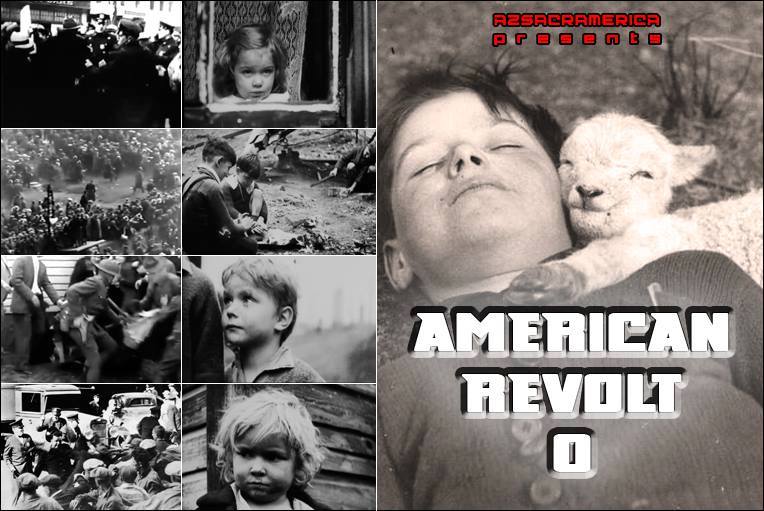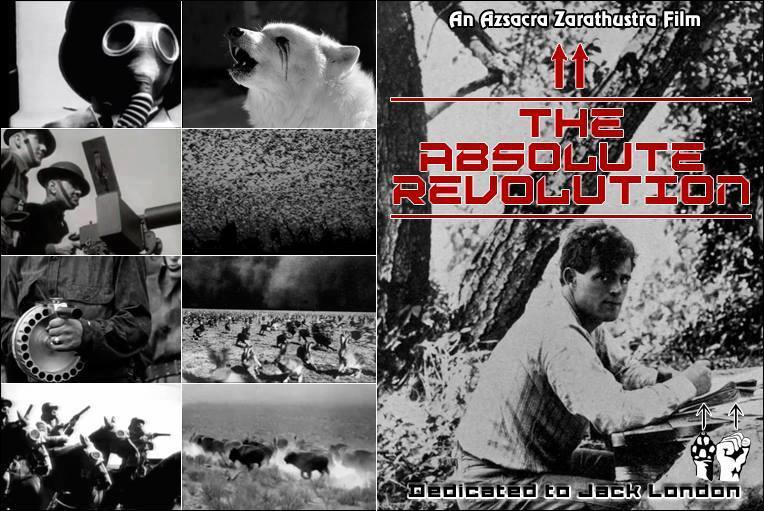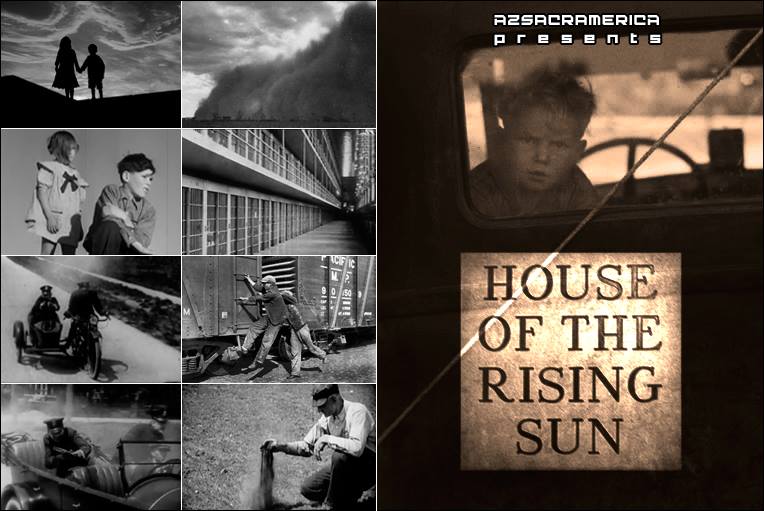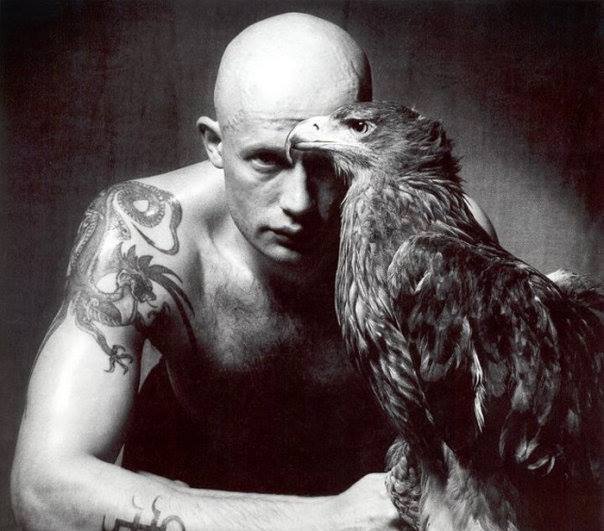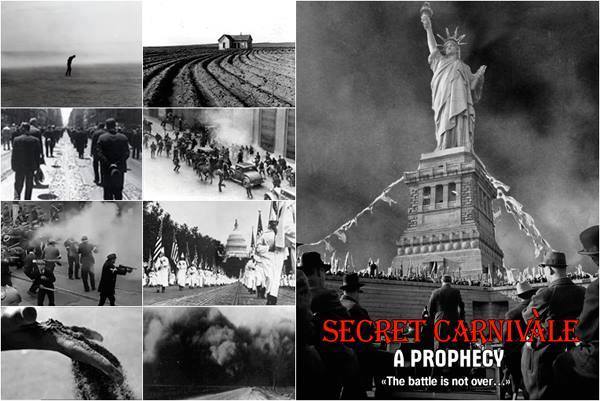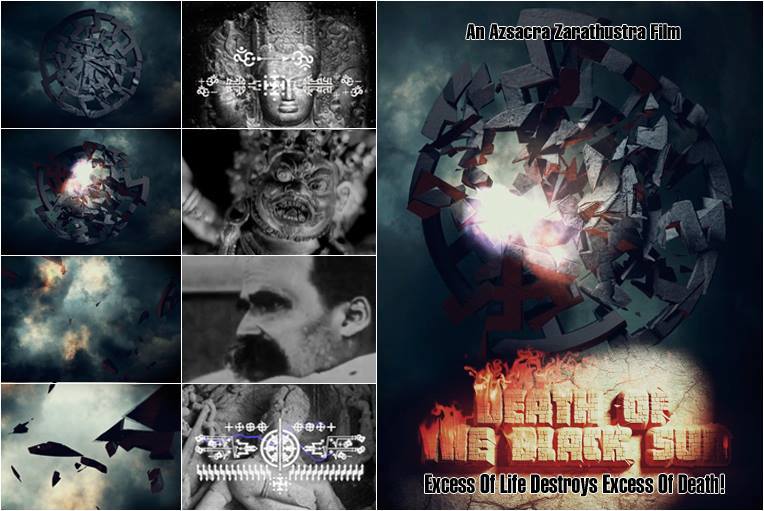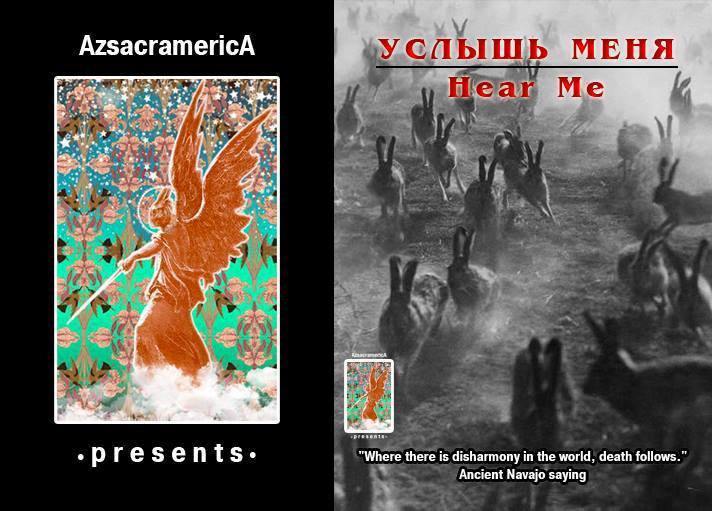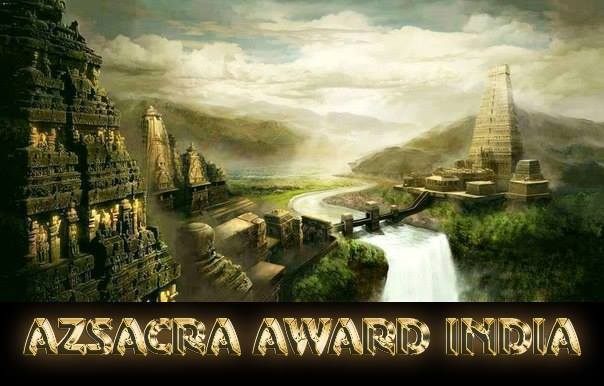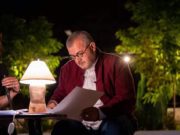Andrei Azsacra or Azsacra Zarathustra or A
Andrei Azsacra or Azsacra Zarathustra or A is a Russian rebellious thinker, filmmaker and poet-mystic. The creator of philosophical concepts The Shunya Revolution, The Absolute Revolution, Revolt Against the Modern Traditionalism, TDAS (The Theory of the Destruction of All Systems), NihillihiN, Übernoumen, Over Without a Man etc.
Azsacra is a founder of International Poetry Award For Taj Mahal Review (India). He is Editorial Advisor in the international journal of poetry and art “Harvests of New Millennium” (India). Andrei Azsacra has created and heads the Center of the help and protection of the birds in Russia (Ural Mountains). He is published in India, America, Germany, England, Japan, Norway, Australia etc.
Azsacra Zarathustra’s films: The Shunya Revolution (2012), End of The Society of The Spectacle (2012), The Hindu Revolution: Utopia (2012), Atomic Kurukshetra: Lightnings against Atomic Explosions (2012), Requiem: A Holy Yes To Life (2014), Stalker-2: The Revolution! (A Film by Andrei Tarkovsky & Andrei Azsacra, 2015), 0000 (2016), Secret Carnivàle: A Prophecy (2016), Услышь Меня: Hear Me (2016), Triumph of Life: Swastika of Life vs. Swastika of Death (2016), Death Of The Black Sun (2016), The House Of The Rising Sun (2016), The Absolute Revolution (2016), American Revolt 0 (2016), 68-17 (2017).
Azsacra Zarathustra’s books: Mysterium (2006), The Lotuses of Evil (2007), America: Invasion of the Heart (2007), Tao Kampf (2008), Bible of Nothing, Bible of Emptiness (2010), The Tunnel at the End of Time (2010), Kurukshetra: Signs & Symbols (2011), Nothing and Nothing to Power (2011), Nothing to Power and Emptiness to Supremacy (2011), Übernoumen (2011), The Evangelies of Birds of Prey (2012), The Doctrine of Nihil-Will (2012), Over Without a Man (Volumes I-II, 2012), Indo-Europe Rising (2012), The Atoms of Kshatriyas (2012), ХодоХ/HodoH (2013), Der Übermensch: Beyond Death of the Overman (2013), TDAS: The Theory of the Destruction of All Systems (2013), Anti-4, or: Against 1, 2, 3, 4, 5 Etc. (2014), Über Vs. Super (2014), Over Contra Super (2014), X-DokoD-X (Russian Edition, 2014), The Epoch of the White Rabbit and Absolute Break of the Spirit (2014), NihillihiN (2016).
Books about Azsacra’s philosophy: Azsacra Zarathustra ― Symbol of Nothing to Power (Edited by Dr. Santosh Kumar; 2011), Azsacra Zarathustra ― The Creator of Shunyarevolution and Absolute Revolution (Edited by Dr. Santosh Kumar; Volumes I-II, 2012), Buddha of Europe and Shiva of America (Edited by Dr. Santosh Kumar; 2013), New Types of Spiritual Revolutions (Robert Taylor, Conor Wrigley; 2014), A Philosophy of Azsacra Zarathustra (Miguel Ángel Fernández; 2015), Protection of A Holy Rebellious Yes to Life: A Philosophy of Azsacra Zarathustra (A Critical Miscellany; 2015), AzsacramericA: The Future of Rebellion & Rebellion of The Future (Thomas Fortenberry; 2016), La Révolution Absolue d’Azsacra Zarathoustra (French Edition; 2016).
AVENGE ME
1
to implant
electrodes
in brain –
2
the rat presses
the “button of
ecstasy”
3
the Orgy
without wish to
survive
4
the rite of
Unappeasable
Frenzy
5
to spread
Death on –
testers!
6
to let out of
the cages rabid
dogs –
7
to tear!
to tear!
to tear!
8
invisibility of
inner
mourning
9
disjointing of the tear
at endlessness
of little tears
10
to fall into
the sobbing of
the finest
11
to seek in fire
for straw
dogs
12
to protect
the senseless and
the finite
13
fluffiness of
chopped off
legs
14
this trembling in
the Midst of
the Sun
15
the shaking of
snouts of
little rats
16
the crack of
breaking
shell
17
continuous
transpiercing of
snowflakes
18
to interflow with
falling
drops
19
to wish
not to survive
too strongly
20
to wish!
not to survive!
too strongly!
21
to pull
the gun
trigger
22
…….
avenge
me
AZSACRA & CAMUS
Absolute and Existence of Azsacra Zarathustra
by Raju Parulekar
Zero is absence. Russian poet, philosopher Andrei Azsacra Zarathustra explores existence in complete absence which leads us towards revolution. After disastrous failure of many ideologies and philosophies, oriental thought of ‘shunya’ i.e absence, allured Azsacra. This is totally new school of thought among Indo-Aryan thinkers. In Hindu or Buddhist philosophy there is an ‘existence of absence’ which is ‘neti-neti’ (negate) by Adi Shankaracharya or ‘nashvant-nashvant’ (persishable) by Gautam Buddha himself.
Nothing is immortal. Everything is perishable. Time changes and we perish, so philosophy, existence everything perishes. We all confront absence one day or other. For Azsacra, as a thinker this is a beginning or hypothesis of his philosophy and poetry. ‘Live life dangerously’ is a core idea of any kind of creativity. Azsacra shows us facets of living dangerously. His creativity begins where others creativity comes to halt. If we want to understand Azsacra, then we should go through the medium he uses, his art, his philosophy and his poetry. Like many Russian thinkers, his philosophy gives us out of the box realisation. He subtly and sometimes very sharply comments on intolerant violence across the globe, especially in Russian and Asian subcontinent.
A man cannot live one’s life without at least one revolution. That revolution can be a revolution within. In oriental philosophical way of life, realisation of the self is not about knowing God but enlightenment about thy self, which is ‘brighter than a thousand suns’. This knowingness is the most creative experience and at the same time most destructive like a nuclear-bomb.
Azsacra’s ‘theatre of cruelty’ presents philosophical detachment from oneself. Today Russia, Europe, America and Asia are confronting unanticipated philosophical problems in everyday life. Suicide to war, sets up complete cycle of destruction without any solution in sight. Azsacra actually lives this poem.
Death
Is the most
fragile.
Death is not the end of existence but is a beginning of solution. He wonderfully presents this in his poem, ‘Tenderness of God’.
Death
Creating the beauty
Will always overcome …
And what is really red like blood
Will shine
And shimmer bright …
THE CRUELTY IS
TENDERNESS OF GOD
Moral of this poem is;
“He who will shoot himself in head
Of thrill will tear the thread!”
These kind of expressions are not new for sage who believes in ‘Advaita’ (Oneness) but the way of expression by Azsacra is absolutely new to this world. Whatever suicidal, cruel, war-like is not existing on the battlefield is existing within, is a message from Azsacra for the world. The most important contribution of his philosophy is, he controls his revolution and gives us faith that revolution by and through one is possible. One can be one million, one billion or one trillion or for that matter single. So importance of followers is denied by his philosophy.
If you can stretch yourself to shunya (absence), your existence will blossom. You can control any possible danger, cruelty, suicide, war or bloodshed. This fearlessness, denies possibilities of conspiracy or conspirators in journey of philosophy to reality. ‘Nihilism’ is not an illusion for Azsacra Zarathustra but Nihilism is a weapon against illusion. In his philosophy, Azsacra Zarathustra again and again, rebelliously advocates heroic death, sudden death or death beyond death, a concept difficult to understand if you go by legacy of European philosopher like Nietzsche. This is an original creation by Azsacra Zarathustra which leads us to believe in rebellious life in contemporary world, without any confusion about self or society. Any society in today’s contemporary; Russian, Asian or European world survive on mediocracy in context of pseudo immortality or legacy. Azsacra Zarathustra denies any kind of legacy, past or future by accepting ‘shunya’. The beauty of his existentialism is post-modern existentialism, I can say. Here, he is entirely different from Albert Camus or his fellow travellers.
Once Albert Camus mentioned in his famous quote, “The only serious question in life is whether to kill yourself or not.” Azsacra Zarathustra gives us solution to this philosophical question. The solution being, “Death is not the end. The thought of death which haunts you and scares you and kills the rebel within you is real philosophical problem. Death of the death is end of illusion and then and only then you can be a real rebel” which is an unparalleled thought in history of existentialism by Azsacra Zarathustra. Every war, bloodshed, killing is an outcome of fear and the most gruesome fear is ‘fear of death’. So, Azsacra Zarathustra wants to deal with death and take out the rebel within you. Conquering death through words, poetry, philosophy, films, every medium of life is Azsacra Zarathustra’s mission. Very few fellow travellers are able to understand his philosophy and fewer are ready to practice it. This shows the exclusivity and originality of Azsacra Zarathustra’ thoughts. He himself practices this philosophy.
Azsacra Zarathustra uses his body as a medium to practice his philosophy. In Oriental world of philosophy, sages and sanyasis or Bodhi Satva use to practice their philosophy by using their body as a medium and view the problem of this universe through their penance. The same applies to Azsacra Zarathustra. For modern civilisation, he is a bridge between oriental and modern philosophy and creation. By heart, Azsacra Zarathustra is a poet. Many times he uses out of the box concept to describe and illustrate his unparalleled poetry. But sometimes, the poems lies within this great philosopher which he can’t bring on paper but brings it out with a direct act of courage.
Destruction of an illusion is motto of Azsacra Zarathustra which eliminates illusion and hypocrisy from his art and philosophy. For him bravery is not a virtue. It’s way of achieving freedom from death as well as illusion.
Azsacra Zarathustra ‘s work of art or philosophy is not for any hypocritical movement. It’s more like occult science which experiments on our minds. Azsacra Zarathustra is tender and kind and at the same time he is tough and cruel towards life. Here I quote Albert Camus again. “In the age of ideologies, we must make up our minds about murder. If murder has rational foundations, then our period and we ourselves have significance.”
Azsacra Zarathustra came a long way on the same road in his journey of art and philosophy. Either we can practice Azsacra Zarathustra or we will have to be afraid of death and live with hypocritical illusion of existence. Still there is hope for civilisation and that’s what Azsacra Zarathustra is giving us.
Long live his absence!
Long live his existence!
A Legend in Indian Journalism — Raju Parulekar — about an
Anti-philosophy of Azsacra Zarathustra
www.rajuparulekar.us
AZSACRAN PHOENIX AND SWORD:
AMERICAN REVOLUTION 0
Introduction by Thomas Fortenberry in a book
“AZSACRAMERICA”
“I rebel; therefore I exist in NihillihiN.” ~ Azsacra Zarathustra
What more exemplifies the American spirit than rebellion and revolution? Revolution is our founding myth. Rebellion against the status quo is almost our curse. When I was young, we celebrated the American Bicentennial with “The Spirit of ’76!” parades, products, parties, and symbols. Meaning, we celebrated our Founding Fathers and our freedoms, our independent streak, our revolutionary spirit ― that spirit of the revolution which created our independent nation (the world’s first) from the shackles of an imperial colony.
Not quite a modern-day Paul Revere warning, “The British are coming!” Azsacra however has issued a stern warning. Complacency is coming. Stasis and stagnation is coming. Azsacra has called for a revolution in human spirit. An awakening. Though his philosophy embraces the world, let us focus for a moment on America. He posits a fascinating theory that America is poised for a second revolution. This will be a revolution in spirit, a freeing of minds and a release from materialism, rather than a historically-doomed-to-repeat neo-bluecoats fighting against neo-red coats in the streets of Boston for the material wealth of a continent. Nothing is ever that simple in Azsacra’s mind.
It is ironic that Azsacra asked me to write the forward of this book at this time. We are gearing up for a Titanic political battle in America. This year we have record breaking numbers of political candidates spending record breaking amounts of money in seemingly endless derogatory and degrading campaigns to wrest control of this nation from each other. It has nothing to do with the people’s choices, needs, or wishes any more, just the political system (long since a public relations tool of the corporate machine) wrestling with itself to see which one of its spokespersons should be chosen like a popular brand name for the next few years. The machine churns on.
But things like TV ads and debates (which are simply live ads) do nothing to make us think. In fact they are white noise intended for the opposite effect. They dull the mind and spirit. The annoying buzz of angry insects debating becomes eventually a numbing hum, as comforting as the grave, which lulls us all to sleep.
Azsacra Zarathustra is all about waking us up. His thoughts electrify. They are the strike of lightning and crash of thunder that startles you awake, so that you realize a storm is coming.
When he invited me to introduce this book, I leaped at the chance because it was welcome relief from the monotony of the political season. Finally, something about real change, real thought, real action.
I feel I must explain to my fellow Americans who may be discovering his words/thoughts/works for the first time. Some people are startled or put off by Azsacra’s artworks, his performances, or his intense martial meditations. They can be shocking, strong, controversial ― in fact they are on purpose. Their intensity is to awaken, to shake up, to break the viewer out of the routine and force new awareness, new thoughts, new questioning. One thing to comprehend about Azsacra is that his art and symbolism is bottled lightning, captured spirituality ― which, as one knows, cannot be physically realized like a concrete block, but only imagined and groked on a soul level. These art-images are attempts to encapsulate spirit, just as music, dance, song, art are all narrow-spectrum attempts to capture the wider multifaceted spirit. It is the weak material attempt to capture the abstract, the non-physical concept he is trying to convey. To gain our attention he often uses the most extreme methods by body piercing, nudity, physical stress, pain, etc. Azsacra has an uncomfortable habit of pushing his body right up to the ultimate breaking point ― via burning, bruising, injuring himself ― in order to highlight the physical shell’s limitations and point the way beyond the physical vehicle to the higher energy beyond. Furthermore, I know some one here will eventually attack him/his beliefs, claiming he is Communist or Socialist (because he is Russian) or Buddhist or Hindu or Eastern or Witchcraft or whatever, simply because he is non-Christian, misunderstood, or different than they are used to seeing. However, this is pure ignorance and fallacious on several fronts. Beyond the kneejerk reaction of the bigot, the truth is that Azsacra is none of these things. Though he is a fusionist, he has done far more than synthesize the old into new shapes. His interest is universal. He has moved beyond systems. Religions, philosophies, politics, and even culture are not truly his purview. He has moved beyond these base limitations and is far too esoteric. Though his system is hard to comprehend, it is illuminating and well worth the study. I am very interested to see what new thoughts this book presents. I also urge those new to his concepts to simply approach with an open mind. That is all that is required. In some ways there is nothing more American in spirit than Azsacra’s revolutionary creed. To repeat our famous President Franklin D. Roosevelt, “The only thing we have to fear is fear itself.” Don’t fear. Try to understand. It might just revolutionize the way you approach life.
I conceive of Azsacra in terms of mythology, or perhaps the elusive quasi-reality of hardcore quantum mechanical science. He is symbolic fiction, chaotic reality, transformative myth, and pure quantum physics all in one. Perhaps Azsacra changes per the observer, like an electron being everywhere and nowhere or behaving like a particle and a wave simultaneously. He is like a gateway, doorway, or portal, a physical and metaphysical thing all at once. He is right here, rooted in the wall of our world, and yet, he is simply a portal to somewhere else. You can see the other side through the doorway. Another way to conceive of that is the black hole that follows the supernova. After the violent death of a star, producing the brightest and most powerful energy blasts that we can conceive of in the universe, the remaining matter of the star falls into its own gravity well, inverting, and punches a hole through the fabric of reality. A black hole is infinitely compact and so powerful nothing can escape it, not even light. And yet, in the simplest of taoistic terms, just as E=mc2 and light and matter always exist as mirror states of each other, so you can turn a black hole around and discover that it is in fact a white hole on the other side, pouring forth in the creation of a new universe. The ultimate collapse death of the black hole in this reality is in fact the Big Bang ultimate birth of the new reality. They are aspects of the same event, the same portal.
I thought the phoenix symbol quite apt for an American Azsacra book. The sword as well. These two images seem to me to capture some of the duality of Azsacra. He often utilizes the Tiwaz/Tyr/virya/arrow symbol in his works. I thought Miguel A. Fernandez explained this symbolism well in his article “Azsacra’s Theory: The Atoms of Kshatriyas Against the System of Death.” Blue-skinned Arjuna with his bow and arrow is another perfect example of death-overcoming life-overcoming death from mythology. In a former book in my article “Become the Lightning” I explored this symbolism, linking it to the thunderbolt of Zeus, the hammer Mjolnir of Thor, or the god-trident of the Indo-European mythologies. In this introduction I will add the symbol of the sword, in the ancient Melnibonean way, to the Tyr/trident/arrow/lightning bolt image system of NihillihiN.
As we find in mythology. Azsacra is like the sacrificial hero of old. The Demigod, the Great Warrior, The Absolute Hero, the Eternal Champion, the Overhero who must forever fight against overwhelming odds and eventually sacrifice himself in pursuit of the ultimate freedom from tyranny, and in so doing create a New Way for all of us. As Azsacra states, “To save the terrestrial world it is necessary to blow up absolutely all transcendental worlds!”
Azsacra does so. He exemplifies this with the haiku-equation: 0-0-0. Nothing ― Emptiness ― Absence. This is his way to overcome the fleetingness of Life and the eternity of Death. Read “Death Is Haiku,” for more. But speaking of the literary arts, let me touch on a story that reminds me of Azsacra.
This brings me to the mythic tale of another sacrificial hero, Elric of Melnibone, who has become over the decades a quite powerful cult icon. Elric is the premiere antihero of Michael Moorcock’s elaborate Multiverse. Below is a lengthy excerpt, the final passage from the book Stormbringer (1965). In this fantasy series, Elric of Melnibone, the last Emperor of a dying ancient race of elven-type sorcerers in a world poised to be inherited by the Younger Races of Men, has been wielding a powerful, black magical sword named Stormbringer, which was given him by the Lords of Chaos to fight for their side in the battle to balance the world between themselves and the forces of Order. This semi-sentient, daemonic sword has granted Elric immense strength and power, but at a terrible price. It is powered by souls of the living and is thus a vehicle of death. In these woeful tales he has eventually killed everyone he encounters, friends and foes, enemies and lovers alike. In the final, cataclysmic battle Elric has come out supreme and holds the Horn of Fate which must be sounded at the End Time. However, the battles have wasted his strength and he is thus left, broken and too weak to act, with his one remaining companion, on the final battle field:
At length Elric’s thoughts were interrupted by Moonglum. “You must blow the horn, Elric. Whether it means nothing or much ― you must finish this business forever!”
“How? I have scarcely enough strength to stand on my feet.”
“I have decided what you must do. Slay me with Stormbringer. Take my soul and vitality into yourself ― then you will have sufficient power to blow the last blast.”
“Kill you, Moonglum! The only one left ― my only true friend? You babble!”
“I mean it. you must, for there is nothing else to do. Further, we have no place here and must die soon at any rate. You told me how Zarozinia gave you her soul ― well, take mine, too!”
“I cannot.”
Moonglum paced towards him and reached down to grip Stormbringer’s hilt, pulling it halfway from the sheath.
“No, Moonglum!”
But now the sword sprang from the sheath on its own volition. Elric struck Moonglum’s hand away and gripped the hilt. He could not stop it. The sword rose up, dragging his arm with it, poised to deliver a blow.
Moonglum stood with his arms by his sides, his face expressionless, though Elric thought he glimpsed a flicker of fear in the eyes. He struggled to control the blade, but knew it was impossible.
“Let it do it work, Elric.”
The blade plunged forward and pierced Moonglum’s heart. His blood sprang out and covered it. His eyes blurred and filled with horror. “Ah, no ― I ― had ― not ― expected this!”
Petrified, Elric could not tug the sword from his friend’s heart. Moonglum’s energy began to flow up its length and course into his body, yet, even when all the little Eastlander’s vitality was absorbed, Elric remained staring at the small corpse until the tears flowed from his crimson eyes and a great sob racked him. Then the blade came free.
He flung it away from him and it did not clatter on the rocky ground but landed as a body might land. Then it seemed to move towards him and stop and he had the suspicion that it was watching him.
He took the horn and put it to his lips. He blew the blast to herald in the night of the new Earth. The night that would precede the new dawn. And though the horn’s note was triumphant, Elric was not. He stood full of infinite loneliness and infinite sorrow, his head titled back as the sound rang on. And, when the note faded from triumph to a dying echo that expressed something of Elric’s misery, a huge outline began to form in the sky above the Earth, as if summoned by the horn.
It was the outline of a gigantic hand holding a balance and, as he watched, the Balance began to right itself until each side was true.
And somehow this relieved Elric’s sorrow as he released his grip on the Horn of Fate.
“There is something, at least,” he said, “and if it’s an illusion, then it’s a reassuring one.”
He turned his head to one side and saw the blade leave the ground, sweep into the air and then rush down on him.
“Stormbringer!” he cried, and then the hellsword struck his chest, he felt the icy touch of the blade against his heart, reached out his fingers to clutch at it, felt his body constrict, felt it sucking his soul from the very depths of his being, felt his whole personality being drawn into the runesword. He knew, as his life faded to combine with the sword’s, that it had always been his destiny to die in this manner. With the blade he had killed friends and lovers, stolen their souls to feed his own waning strength. It was as if the sword had always used him to this end, as if he was merely a manifestation of Stormbringer and was now being taken back into the body of the blade which had never been a true sword. And, as he died, he wept again, for he knew that the fraction of the sword’s soul which was his would never know rest but was doomed to immortality, to eternal struggle.
Elric of Melnibone, last of the Bright Emperors, cried out, and then his body collapsed, a sprawled husk beside its comrade, and he lay beneath the mighty balance that still hung in the sky.
Then Stormbringer’s shape began to change, writhing and curling above the body of the albino, finally to stand astraddle it.
The entity that was Stormbringer, last manifestation of Chaos which would remain with this new world as it grew, looked down on the corpse of Elric of Melnibone and smiled.
Though long this passage exhibits a quality I find when I think of Azsacra. It covers both the sacrificial hero and his fate, the burning up and transformation of the old into the new, thus the phoenix. Literally, the phoenix in the sword.
The phoenix is an important symbol here because I want to reiterate that Azsacra has moved beyond the simple sacrificial hero. He has rejected the concept of Übermensch or the Overman. He has removed the human element (the weakness/the err) and focused simply on the act: Over. The act is itself the goal, just as energy is the excited state of matter, and verbs the act of doing for any subject. A hero is one who does. Azsacra urges you not settle for being the hero who may act, but rather simply do the acting. Be that which must be done. One cannot rest, even in the moment as the Sacrificial Hero, but rather be the event itself, the sacrifice, or, to put it another way, be the Phoenix.
The phoenix, or firebird, is a common myth in many cultures, including ancient Greek, Egyptian, Native American, and Tibetan. This brilliantly-hued solar bird was basically immortal and could regenerate or be reborn from its self-immolation. After a thousand year cycle it’s nimbus of solar feathers would often erupt in flames and combust down to ashes. The phoenix then resurrects from its own ashes.
This is the concept of Azsacra’s philosophy. The immolation of the lightning bolt is the same as the 0-0-0 sum. The bolt is lightning, it is energy, and the energy is the act. The zero sum is both the ending, the negation, the nothingness to which all returns, and the beginning, the egg, the ovum, the birth of all that is. In a taoistic tantric way, this is the symbolic sexual act. The spear/hammer/sword/1 and the void/ovum/yoni/0 are two aspects of the same act. 1-0. One fills what the other encompasses. The sword/verse/art/song/lightning stabs the heart/body/mind/soul of the wielder and creates satori. They create themselves by their own act of union. Azsacra’s point is the act. Creation itself. He pivots between realities as the gateway, the sword (the Stormbringer) and the phoenix.
The key is to watch this doorway for the opportunity to enter. Like a revolving door, there are many chances over and over and OVER. Seize the day. Enter. Catch fire when lightning strikes this revolving door, ride the bolt and pass through into the new creation. Another term for this endlessly open opportunity at phoenix-like rebirth is: REVOLUTION.
Thomas Fortenberry
Charlotte, NC, 2015
BIO:
Thomas Fortenberry is an award-winning American author, editor, reviewer, and publisher. Founder of Mind Fire Press and the international literary arts journal Mindfire. He has judged many literary contests, including The Georgia Author of the Year Awards and The Robert Penn Warren Prize for Fiction. He helped found several literary companies over the years, such as Mind Fire Press, GKSAS, Third Party Productions (film and TV), and Silverline Comics. Thomas Fortenberry has a great love of mystery and incorporates it stylistically into a wide variety of genres…
Link of Azsacra International Award For Taj Mahal Review:
http://www.tajmahalreview.com/poetryaward.htm
books:
https://www.cyberwit.net/authors/azsacra-zarathustra
https://www.amazon.com/s/ref=sr_pg_1?rh=n%3A283155%2Ck%3AAZsacra+ZARATHUSTRA&keywords=AZsacra+ZARATHUSTRA&ie=UTF8&qid=1484311765
https://vimeo.com/189807072
https://vimeo.com/194707457
https://vimeo.com/186000763
